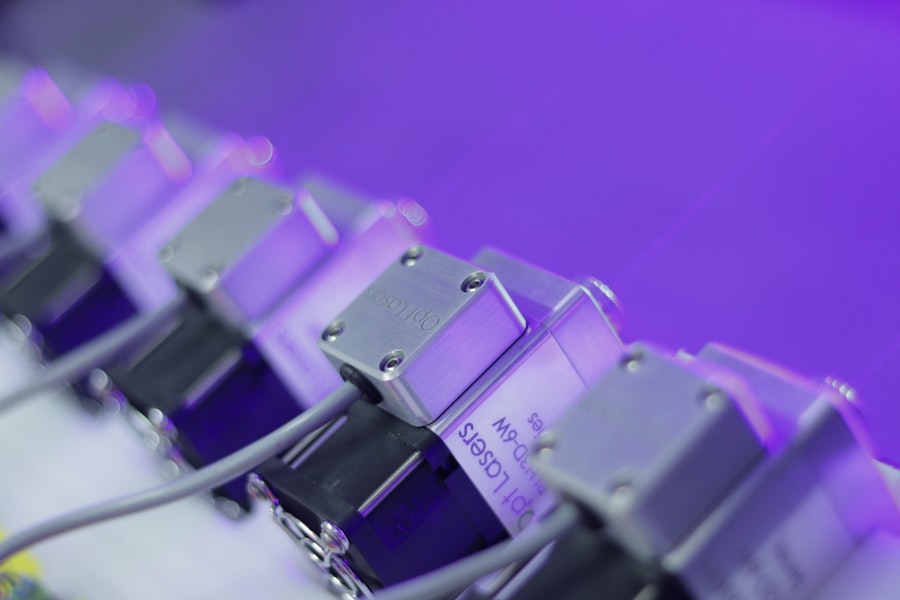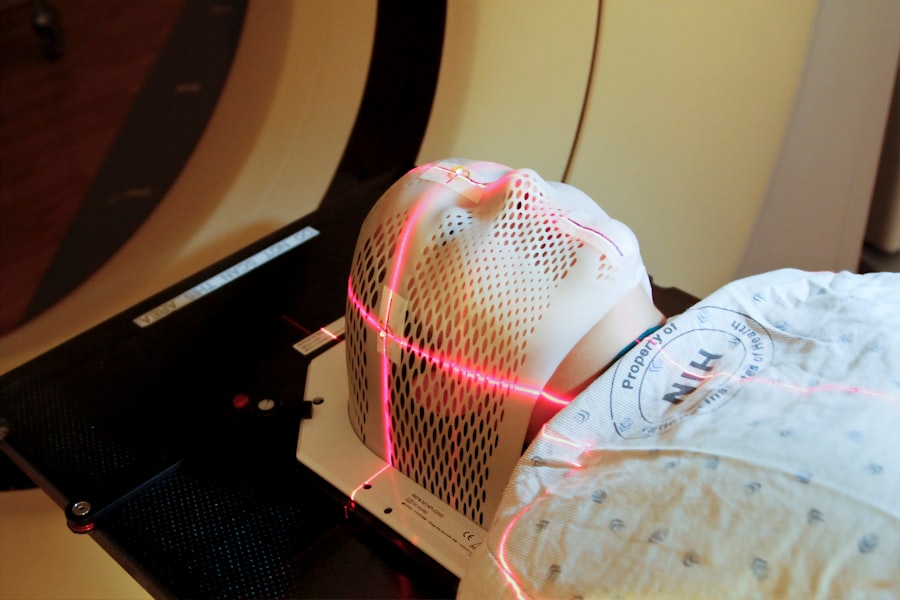When you think about hair removal, you might envision a range of methods, from shaving to waxing, each with its own set of pros and cons. However, laser hair removal has emerged as a popular choice for those seeking a more permanent solution. This method utilizes concentrated beams of light to target hair follicles, effectively reducing hair growth over time.
As you consider this option, it’s essential to understand how the process works and what it entails. Laser hair removal is not just a quick fix; it’s a long-term investment in your appearance and comfort. The procedure is designed to be efficient and can be performed on various areas of the body, including the face.
Many individuals opt for this treatment to eliminate the hassle of regular shaving or waxing, which can be time-consuming and often leads to skin irritation. By understanding the fundamentals of laser hair removal, you can make an informed decision about whether it’s the right choice for you.
Key Takeaways
- Laser hair removal uses concentrated light to target and destroy hair follicles, leading to permanent hair reduction.
- The science behind laser hair removal involves targeting the melanin in the hair follicle, which absorbs the light and converts it into heat, ultimately destroying the follicle.
- Laser hair removal is effective on facial hair, but multiple sessions may be required for optimal results due to the hair growth cycle.
- Factors affecting the permanence of laser hair removal include hair color, skin color, and hormonal imbalances.
- Risks and side effects of laser hair removal on the face may include redness, swelling, and potential scarring, especially if not performed by a qualified professional.
The Science Behind Laser Hair Removal
At the heart of laser hair removal lies a fascinating interplay of light and heat. The procedure employs specific wavelengths of light that are absorbed by the pigment in your hair follicles. When the laser is directed at the skin, the energy from the light is converted into heat, which damages the follicle and inhibits future hair growth.
This process is known as selective photothermolysis, and it’s crucial for the effectiveness of the treatment. The science behind this method is not only intriguing but also highlights why certain factors can influence its success. For instance, the contrast between your skin tone and hair color plays a significant role in how well the laser can target the follicles.
Darker hair on lighter skin tends to yield the best results because the laser can easily differentiate between the pigment in the hair and the surrounding skin. Understanding these scientific principles can help you set realistic expectations for your treatment outcomes.
Effectiveness of Laser Hair Removal on Facial Hair

When it comes to facial hair removal, many people find themselves grappling with various options. Laser hair removal stands out as a particularly effective method for those looking to achieve smooth, hair-free skin on their faces. The precision of lasers allows for targeted treatment in sensitive areas, such as the upper lip, chin, and cheeks, making it a popular choice among individuals seeking to enhance their appearance.
However, it’s important to note that while laser hair removal can significantly reduce hair growth, it may not guarantee complete permanence for everyone. Factors such as hormonal changes and individual hair growth cycles can affect results. Many clients report a substantial reduction in hair density and thickness after several sessions, leading to smoother skin and less frequent maintenance.
By understanding its effectiveness on facial hair, you can better appreciate what to expect from your treatment journey.
Factors Affecting the Permanence of Laser Hair Removal
| Factors | Impact on Permanence |
|---|---|
| Skin Color | Dark skin may require special lasers for effective treatment |
| Hair Color | Darker hair responds better to laser treatment |
| Hormones | Fluctuations can affect hair growth and require additional sessions |
| Treatment Area | Some areas may be more resistant to treatment |
| Quality of Equipment | High-quality lasers are more effective and provide better results |
While laser hair removal is often touted as a long-lasting solution, several factors can influence its permanence. One of the most significant factors is your hair growth cycle. Hair grows in different phases—anagen (growth), catagen (transitional), and telogen (resting)—and laser treatments are most effective during the anagen phase when the hair is actively growing.
This means that multiple sessions are typically required to target all hairs effectively. Additionally, hormonal fluctuations can play a crucial role in how your body responds to laser hair removal. Conditions such as polycystic ovary syndrome (PCOS) or hormonal imbalances can lead to increased hair growth, potentially diminishing the permanence of your results.
Your skin type and color also matter; individuals with darker skin may require specialized lasers to avoid skin damage while still effectively targeting hair follicles. By considering these factors, you can better understand how to maximize your results from laser hair removal.
Risks and Side Effects of Laser Hair Removal on the Face
As with any cosmetic procedure, laser hair removal comes with its own set of risks and potential side effects, particularly when performed on sensitive areas like the face. While many people experience minimal discomfort during treatment, some may encounter temporary redness or swelling in the treated area. These side effects usually subside within a few hours but can be concerning if you’re not prepared for them.
In rare cases, more severe side effects may occur, such as blistering or changes in skin pigmentation. It’s essential to choose a qualified practitioner who understands your skin type and can tailor the treatment accordingly to minimize these risks. Additionally, following pre- and post-treatment care instructions can significantly reduce the likelihood of adverse effects.
By being aware of these potential risks, you can approach your laser hair removal journey with greater confidence.
Maintenance and Follow-Up Treatments for Laser Hair Removal

Once you’ve completed your initial series of laser hair removal sessions, you might wonder about maintenance and follow-up treatments. While many individuals experience significant hair reduction after their initial treatments, some may find that occasional touch-ups are necessary to maintain their results. This is particularly true for areas where hormonal changes may stimulate new hair growth.
Typically, maintenance sessions are recommended every six months to a year, depending on individual factors such as hair growth patterns and hormonal influences. These follow-up treatments are generally quicker and less intensive than the initial sessions since there will be fewer hairs to target. By committing to these maintenance sessions, you can enjoy long-lasting results and keep unwanted facial hair at bay.
Alternative Options for Permanent Hair Removal on the Face
If laser hair removal doesn’t seem like the right fit for you, there are alternative options available for permanent facial hair removal. Electrolysis is one such method that involves using an electric current to destroy individual hair follicles.
Another option is intense pulsed light (IPL) therapy, which uses broad-spectrum light rather than a focused laser beam. While IPL can be effective for some individuals, it may not provide the same level of precision as laser treatments. Additionally, there are various topical treatments and prescription medications that can help manage unwanted facial hair growth, particularly for those dealing with hormonal imbalances.
By exploring these alternatives, you can find a solution that aligns with your needs and preferences.
Consultation and Considerations for Laser Hair Removal on the Face
Before embarking on your laser hair removal journey, scheduling a consultation with a qualified practitioner is crucial. During this initial meeting, you’ll have the opportunity to discuss your goals, medical history, and any concerns you may have about the procedure. A skilled professional will assess your skin type and hair color to determine the most suitable treatment plan tailored specifically for you.
It’s also essential to consider factors such as cost, time commitment, and potential side effects before making your decision. Understanding what to expect during each session and how many treatments you may need will help you prepare mentally and financially for this investment in your appearance. By taking these considerations into account during your consultation, you’ll be better equipped to make an informed choice about whether laser hair removal is right for your facial hair concerns.
In conclusion, laser hair removal offers a promising solution for those seeking a more permanent way to manage unwanted facial hair. By understanding its mechanics, effectiveness, risks, and maintenance requirements, you can navigate this journey with confidence and clarity. Whether you choose laser treatments or explore alternative options, being well-informed will empower you to make decisions that align with your beauty goals.
If you are considering laser hair removal on your face and wondering if it works permanently, you may want to check out the article on In Laser Hair Removal website. This article may provide you with valuable information on the effectiveness of laser hair removal treatments for facial hair. Additionally, you can explore their other articles on customizing your interests and staying up-to-date with the latest trends in fashion and beauty on In Laser Hair Removal website.
FAQs
What is laser hair removal?
Laser hair removal is a cosmetic procedure that uses a concentrated beam of light (laser) to remove unwanted hair. The light is absorbed by the pigment in the hair follicles, which damages the follicle and inhibits future hair growth.
Does laser hair removal work permanently on the face?
Laser hair removal can lead to long-term hair reduction, but it is not guaranteed to work permanently. Some people may experience permanent hair reduction, while others may require maintenance treatments to keep the hair at bay.
How many sessions are typically needed for laser hair removal on the face?
The number of sessions needed for laser hair removal on the face can vary depending on the individual’s hair type, skin color, and the area being treated. On average, most people require 6-8 sessions spaced 4-6 weeks apart to achieve optimal results.
Is laser hair removal on the face safe?
When performed by a qualified and experienced practitioner, laser hair removal on the face is generally considered safe. However, there are potential risks and side effects, such as skin irritation, redness, and changes in skin pigmentation. It’s important to consult with a dermatologist or licensed technician before undergoing treatment.
Who is a good candidate for laser hair removal on the face?
Laser hair removal is suitable for most people, but it is most effective on individuals with light skin and dark hair. People with darker skin tones may require specialized lasers to avoid skin damage. It’s important to discuss your skin type and hair color with a professional before undergoing treatment.
Are there any alternatives to laser hair removal for facial hair?
There are alternative methods for facial hair removal, such as waxing, threading, and electrolysis. Each method has its own pros and cons, and the effectiveness can vary from person to person. It’s important to consider your individual needs and consult with a professional to determine the best option for you.




